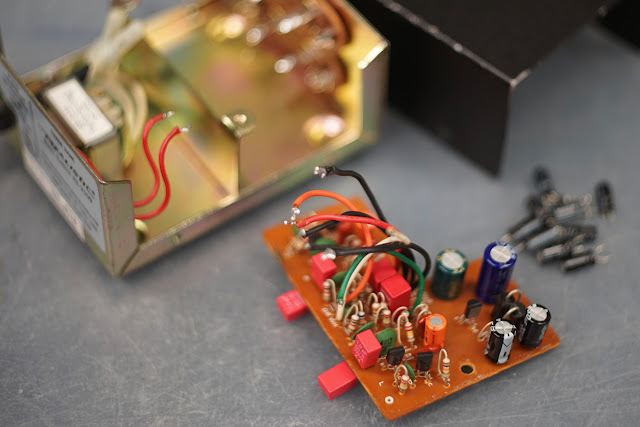 |
VAS Audio Workshop |
Before lockdown, Ding promised that he'd introduce me to his friend, Steve Leung, of VAS Audio. He's had his Denon DL103S, Ortofon SL15, Supex SD900, and other classic cartridges re-tipped and repaired by Steve. As the pandemic wound down, I finally got to meet Steve and brought the following MC cartridges for new tips, as well as tonearms for repair at his shop.
Ortofon SPU GME MKII
 |
| SPU GME MKII - BEFORE |
 |
| SPU-G |
This SPU-G portrays a wider and airier sonic landscape with perhaps a bit more detail compared to my more recent SPU#1s. It also sounds more organic than the GME MKII.
 |
| SPU GM |
Agreeing to my downgrade idea,😉 Steve may have turned the GME MKII into an SPU-G equivalent of the SPU-A wood. All I know is, it can stand up to my cousin's SPU Synergy!😊
Supex SD900 MKIV
 |
| BEFORE |
 |
| AFTER |
.jpg) |
| SD900 MK IVs (s = spherical) |
Stax UA-3NL
I added the UA-3NL to my collection in early 2018 and paired it with my Thorens TD124 and Sony TTS 2500, respectively. I was going to include this tonearm in my Alfred Bokrand AB309 write-up but one channel dropped out.
When I finally accessed the internal hair-like strands of enameled wire, I realized that repairing it was beyond my DIY abilities.
Similar to the knife-edge bearing'd SME 3012, the Stax presents a mid to back row concert hall perspective, which is an atmospheric experience without any loss of detail. Although I've used it satisfactorily with the SPU#1S, it brings out the best from cartridges that track in the 1.5 > 2.5 gram range. Just like the SME 3012, the UA-3NL may not appeal to listeners who favor a front row seat/kick drum on your chest presentation.
Thanks to Steve's skill and nimble hands, I'm enjoying my UA-3NL again!
Tokyo Sound ST900
This 9" tonearm from the early 60s has an NHK broadcasting heritage. Comprehensive information about the ST900 is available at audio-heritage.jp. Surprisingly, the spindle to pivot mounting distance wasn't specified.
So I took out my ancient Cart-Align protractor, did some measurements with my Ortofon SPU#1s cartridge attached and got a pivot to spindle distance of 223mm. I haven't had any problems with cartridges I installed conforming to the SPU's overhang.
Claus Volke and this Japanese audio blog have more to say about this tonearm.
The design may have been inspired by the Ortofon SMG212 and SKG212 with added Japanese innovations. It is quite massive and can easily balance a 30+ gram SPU. So far the lightest cartridge/head shell combo I used successfully was 19.5 grams. Given its high tolerance bearings, it's an ideal partner to the Denon DL103, Ortofon SPU, and similar low compliance cartridges. Consider this as an excellent alternative to the classic Ortofon AS/RM/SK/SMG 212 series tonearms especially if you prefer the svelte proportions of a compact plinth!
iPhone video clips of the MC cartridges and tonearms in action
 |
| Steve, the master craftsman, and Ding |
Looking forward to Steve's visit to the man cave!🍻













































